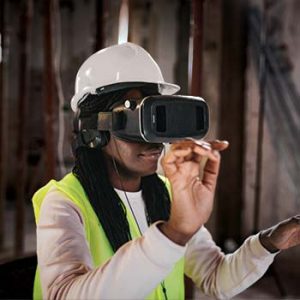How to Train Construction Workers on New Technology
Technology is critical for the future of the construction industry. With the surge in demand for construction work, already short-staffed companies need a solution for keeping up to speed. Tech offers many valuable tools to the building sector, but training employees to use them can be challenging, especially when they have had little previous experience.
Luckily, construction companies can use certain methods to help their teams master new technologies on-site, from long-time industry veterans to new hires fresh out of craft or technical training.
1. Use Hands-On Training
The first thing to remember when creating a training program in construction is to make things as hands-on as possible. This has a few benefits. It will go a long way toward keeping everyone engaged throughout the training process by giving them something to actively participate in. Education experts have found that learning by experience is often effective, helping people remember what they are being taught with greater consistency and accuracy. This is true in all educational settings but is especially applicable in construction. Since workers must actively use new technology sooner or later, allowing them to interact with it from the start of their training will maximize effectiveness. Team leaders will be able to see how workers are catching onto the device or software they are learning about, giving instructors the chance to correct mistakes before they happen in the field.
2. Offer Real-World Applications
Another key to effective training is putting new technologies in context. One challenge that construction companies face when implementing them is a lack of enthusiasm or motivation to adapt, especially from older workers who may be more set in their ways. Demonstrating exactly how the tech can be helpful in the field in day-to-day activity will help increase engagement and interest during training.
Real-world examples of technology’s benefits are also important for presenting new initiatives to stakeholders and other project leaders. For example, a construction company that wants to train its team to operate a surveying drone could show statistics revealing the decreased workload and surveying time. It should present ways the technology improves work experience, budget and project flow. These benefits could sway more skeptical workers and the stakeholders who need to approve equipment’s purchase.
3. AR and VR for Safe Simulated Training
One of the challenges of any kind of construction training is safety. Navigating the line between learning and doing is particularly difficult since many elements of the industry pose a danger to inexperienced workers. Luckily, most new construction technology makes safety a priority. Nonetheless, it is helpful to have a way to provide hands-on training without endangering anyone. Augmented reality (AR) and virtual reality (VR) offer a cutting-edge solution.
AR and VR have already been used for training in numerous industries over recent years, as well as in classrooms around the world. While AR and VR may sound advanced, using them is actually fairly straightforward with today’s technology. With VR, workers can learn to operate remote-controlled heavy equipment without worrying about damaging anything. AR allows team members to learn to repair a drone with the help of a heads-up display guiding them through the process.
No one can get injured during training in the digital world, and no expensive equipment can be damaged. Workers get the training they need without risk or pressure.

4. Make Tech Training Inclusive and Varied
The successful implementation of new technologies in construction depends on widespread familiarity with the new device or software. An important step is making sure as many team members as possible get a chance to participate in technology training, from new site workers to veteran managers and even interested project leaders. This will help lift the entire project and the industry at large.
Inclusivity in training should go beyond age and experience, too. One of the top expert tips for developing a construction training program is encouraging diversity training. This is important because the building industry’s demographics are shifting drastically, with programs like Nontraditional Employment for Women (NEW) bringing more women and people of color into the workforce. These new skilled team members are invaluable in the face of the sector’s labor shortage.
Making sure everyone feels they are a critical part of the project and understands new technology will help create a widely capable team. The goal of training should be to expose as many workers as possible to innovative tech and create a highly skilled and experienced team prepared to build the construction industry’s future.
Technology and Training in Construction
Technology has the potential to revolutionize the construction industry as nothing has before. There has never been a more critical time for teams to adapt and evolve due to labor shortages and demand for new projects. Comprehensive, engaging, inclusive training can empower workers to try new technologies, continue learning and help push the industry toward the future.
Interested in receiving more great construction news, research and content from NCCER? Click here to join our mailing list!

